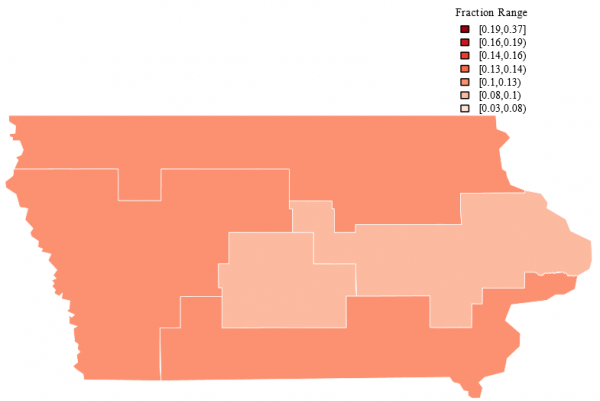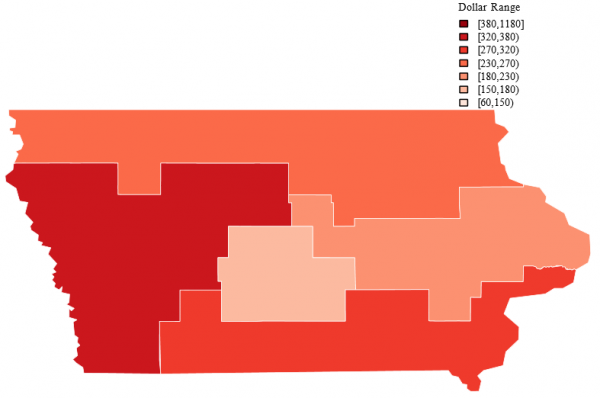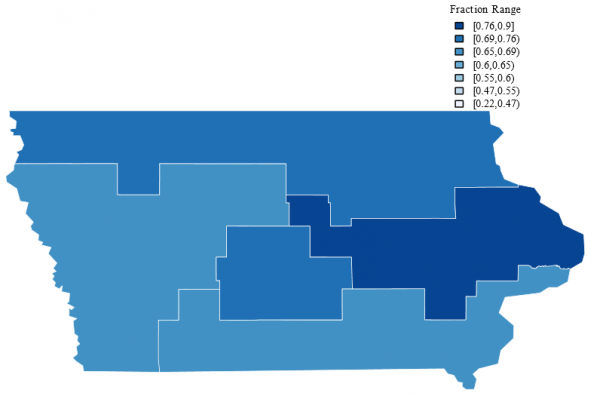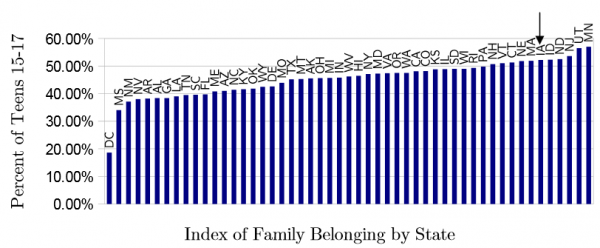State of the Family in Iowa
The United States Family Belonging Index is 46 percent, with a corresponding Family Rejection Index of 54 percent, based on 2008-2012 data from the U.S. Census Bureau’s American Community Survey. The action of parents determines the Family Belonging or Rejection Index within a nation, region, state, or racial or ethnic group—whether they marry and belong to each other, or whether they reject one another through divorce or other means. Rejection leaves children without married parents committed to one another and to their children.
The Index of Family Belonging is determined by the fraction of children aged 15 to 17 in a given area who live with both their biological parents, who have been married since before or around the time of their birth.
1. Index of Belonging
Iowa has a Family Belonging Index of 52.2 percent. In other words, 52.2 percent of Iowan teenagers aged 15 to 17 have lived with their always-married parents since their birth, whereas 47.8 percent of these adolescents were raised in a non-intact family. Iowa ranks 6th on the state ranking of the Index of Belonging and Rejection.1)
2. Outcomes by Index of Belonging
2.1 Youth Outcomes
3. Mapping Iowa
3.1 Family Intactness
3.2 Teenage Out-of-Wedlock Births
Fraction of teenage out-of-wedlock births out of all births

3.3 High School Graduates
Fraction of 19- to 20-year-olds who are high school graduates

3.4 Employment
Fraction of 25- to 54-year-old men working

3.5 Earnings
Average earnings per 25- to 54-year-old male

3.6 Homeowners
3.7 Poverty
See Effects of Family Structure on Poverty
Fraction of the overall population below poverty
 Fraction of 25- to 54-year-old females below the poverty line
Fraction of 25- to 54-year-old females below the poverty line
 Fraction of minors below the poverty line
Fraction of minors below the poverty line

3.8 Government Dependence
See Effects of Family Structure on Government Dependency and Effects of Welfare on Families
Fraction of households receiving food stamps
 Average TANF and State Welfare Transfers per 25- to 54-year-old females
Average TANF and State Welfare Transfers per 25- to 54-year-old females
 Average Social Security Disability Income (SSDI) per 25- to 54-year-olds
Average Social Security Disability Income (SSDI) per 25- to 54-year-olds
 Average Social Security Disability Income (SSDI) per 25- to 54-year-old male
Average Social Security Disability Income (SSDI) per 25- to 54-year-old male
 Average Supplemental Security Income (SSI) per 25- to 54-year-old male
Average Supplemental Security Income (SSI) per 25- to 54-year-old male
 Average Supplemental Security Income (SSI) per 25- to 54-year-old female
Average Supplemental Security Income (SSI) per 25- to 54-year-old female

3.9 Healthcare
See Effects of Family Structure on Healthcare Coverage
Fraction of 25- to 54-year-olds receiving public healthcare
 Fraction of minors receiving public healthcare
Fraction of minors receiving public healthcare
 Fraction of 25- to 54-year-olds covered by private healthcare
Fraction of 25- to 54-year-olds covered by private healthcare
 Fraction of minors covered by private healthcare
Fraction of minors covered by private healthcare





